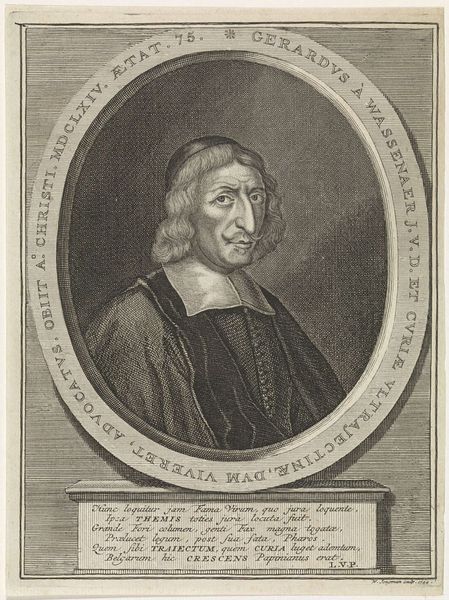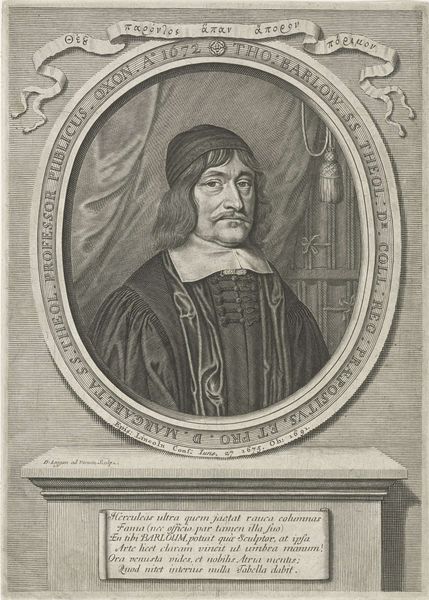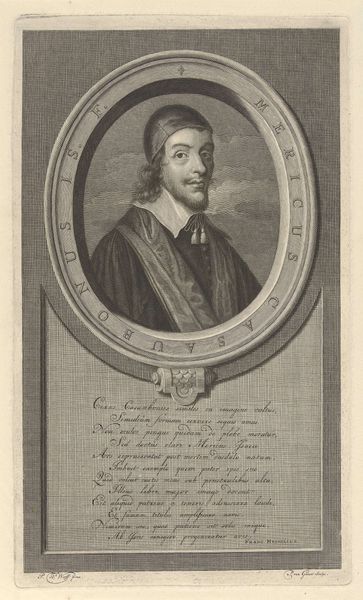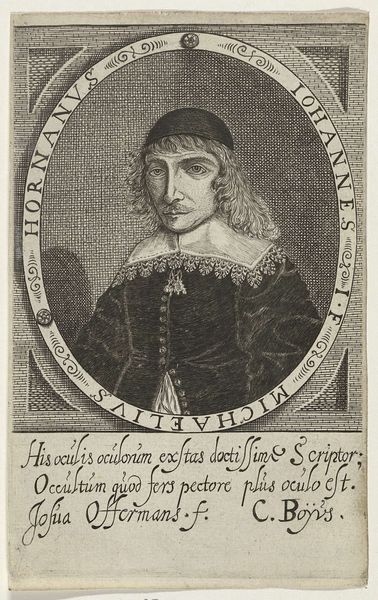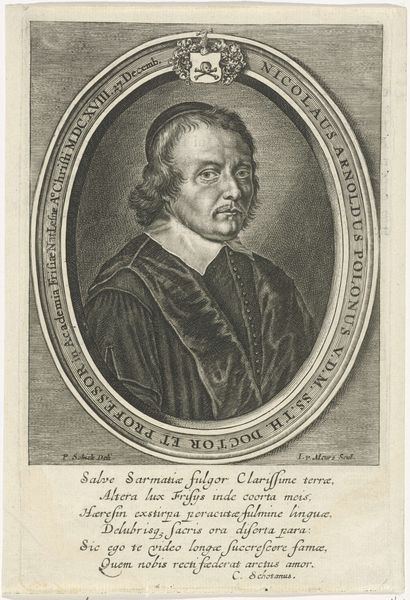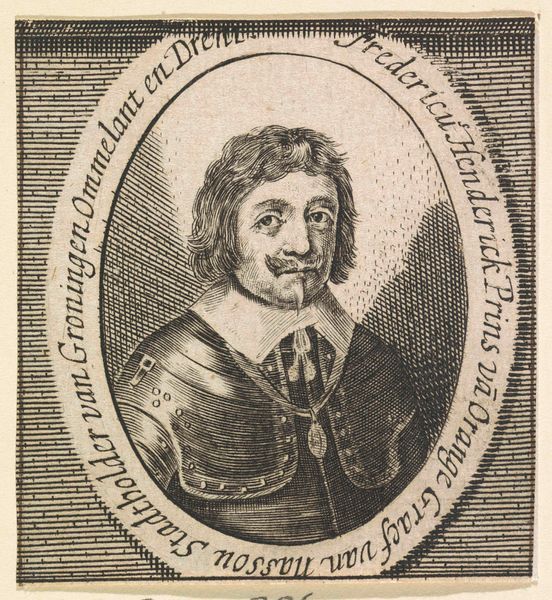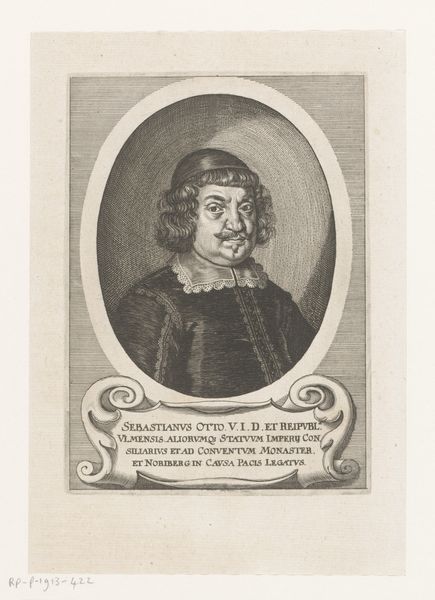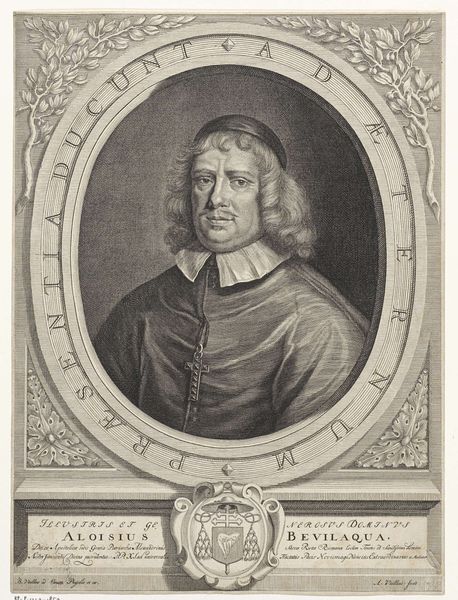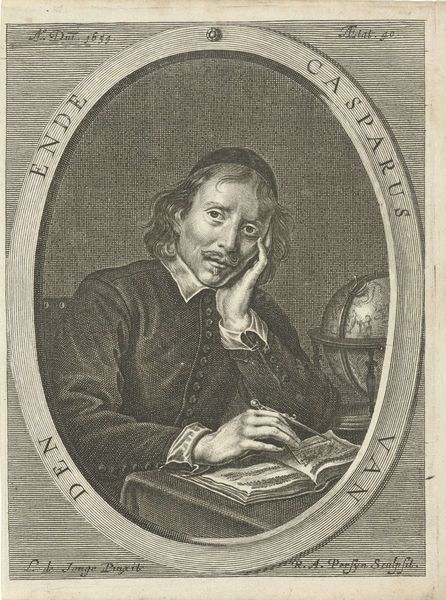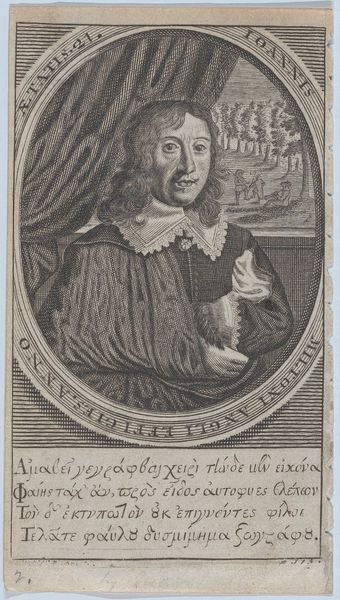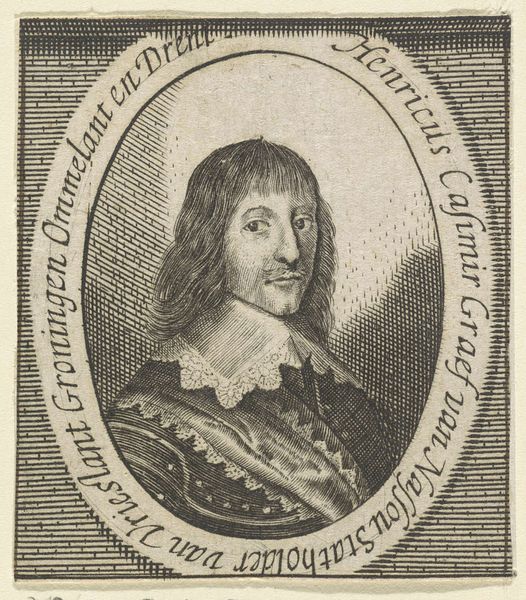
print, engraving
#
portrait
#
baroque
#
dutch-golden-age
# print
#
historical photography
#
engraving
Dimensions: height 246 mm, width 150 mm
Copyright: Rijks Museum: Open Domain
Curator: Let's turn our attention to this engraving, "Portret van Gerard van Wassenaer op 75-jarige leeftijd," dating from after 1664, by Hendrik Bary. It's currently held in the Rijksmuseum. Editor: The first thing I notice is the oval frame around his portrait, giving it a sort of precious, cameo-like quality, though the tones are subdued. The textures achieved through the engraving create a compelling contrast. Curator: Absolutely. Bary, working during the Dutch Golden Age, presents Wassenaer, likely an influential figure, within a visual language deeply tied to social status and power. The detailed inscription reinforces his importance, reflecting the 17th-century emphasis on commemorating civic leaders and intellectuals. The image functions as a historical record but also as a statement of identity within a specific socio-political context. Editor: Yes, the engraving technique really emphasizes the subject’s features—particularly the lines of his face. Bary really models with the medium’s fine gradations. He appears wise and somewhat world-weary. And look at how the composition balances the textures in the background against the smoothness of his collar. Curator: He definitely conveys authority, and one sees, through close observation, the way this image normalizes such a position through specific representational conventions. Wasennaer would certainly occupy an interesting nexus of social standing and legal influence within the Dutch Republic, which may well offer insight on that time and how we grapple with similar matters today. Editor: It also creates a sense of intimacy and detachment at the same time. Engravings are a comparatively reproducible form, yet this likeness aims to immortalize a very particular, elite individual. Curator: I agree. Exploring artworks like this helps to foster better recognition of the dynamic relationships among social narratives, artistic expression, and historical circumstances. Editor: Indeed. Through Bary’s composition and method we begin to decode aspects of the time and a sitter's role and bearing within its matrix.
Comments
No comments
Be the first to comment and join the conversation on the ultimate creative platform.

